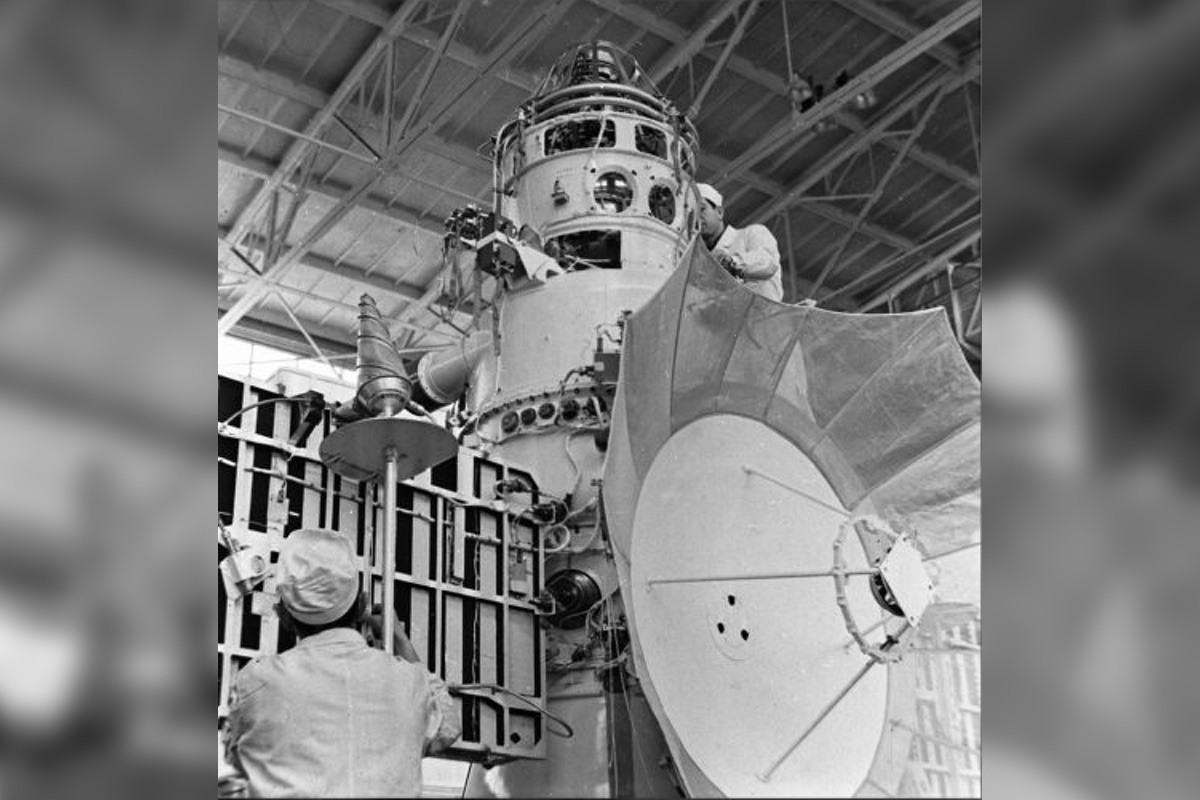Doomed Soviet satellite from 1972 will tumble uncontrollably to Earth next week — and it could land almost anywhere
The lander section of the Kosmos 482 probe was launched in 1972 and designed to survive on Venus. Now it's due a fiery reentry to Earth.

A chunk from a 53-year-old Soviet spacecraft designed to land on Venus is set to cannonball back to Earth next weekend, and nobody knows where it might land.
The Kosmos 482 probe, made and launched by the U.S.S.R. in 1972, was built as part of the Venera program that collected data from Venus's hellish surface.
But a malfunction in the upper stage of the Soyuz rocket booster that lofted the ship skyward scuppered its mission, leaving the craft without the required velocity to reach the planet and instead marooning it in an elliptical orbit around our own.
Now, a telescope analysis conducted by a space researcher and satellite watcher has revealed that the descent module of the failed spaceship is due for an imminent fiery return to Earth — sometime around May 10, give or take a few days.
Related: 5,000-pound European satellite burns up over Pacific Ocean after 30 years in orbit
"As this is a lander that was designed to survive passage through the Venus atmosphere, it is possible that it will survive reentry through the Earth atmosphere intact, and impact intact," Marco Langbroek, a lecturer in space situational awareness at Delft Technical University in the Netherlands who discovered the lander's impending return, wrote in a blog post. "The risks involved are not particularly high, but not zero."

Kosmos 482 was built as a sister probe to Venera 8, which launched in July 1972 to become the second craft (following Venera 7) to land on Venus's scorching surface. Once there, Venera 8 beamed data from Venus for just over 50 minutes before being fried by the inhospitable planet's blisteringly-hot atmosphere.
Get the world’s most fascinating discoveries delivered straight to your inbox.
Following its failed launch, Kosmos 482 broke into two pieces consisting of the main body and the lander. The former reentered Earth's atmosphere nine years after launch on May 5 1981, while the descent craft remained trapped inside a slowly decaying orbit that has persisted for more than 50 years.
When the 1,091 pound (495 kilograms), 3-foot (1 meter) lander returns to Earth, Langbroek predicts that it will be travelling at roughly 150 mph (242 km/h), so he likens the risk of its impact to that of a meteorite. As for where the doomed craft will land, Langbroek says it's still too early to tell.
"With an orbital inclination of 52 degrees, the Kosmos 482 Descent Craft could come down anywhere between 52 degrees north and 52 degrees south latitude," he wrote in an article for The Space Review. "This includes much of south and mid-latitude Europe and Asia, as well as the Americas and the whole of Africa and Australia. Of course, the biggest chances are that it will land in one of the oceans, as the failed Phobos-Grunt Venus mission did on January 15, 2011."
With satellite trackers continuing to observe the spacecraft's tumble from orbit, a clearer picture of its uncontrolled reentry will emerge in the coming days.

Ben Turner is a U.K. based writer and editor at Live Science. He covers physics and astronomy, tech and climate change. He graduated from University College London with a degree in particle physics before training as a journalist. When he's not writing, Ben enjoys reading literature, playing the guitar and embarrassing himself with chess.
You must confirm your public display name before commenting
Please logout and then login again, you will then be prompted to enter your display name.


